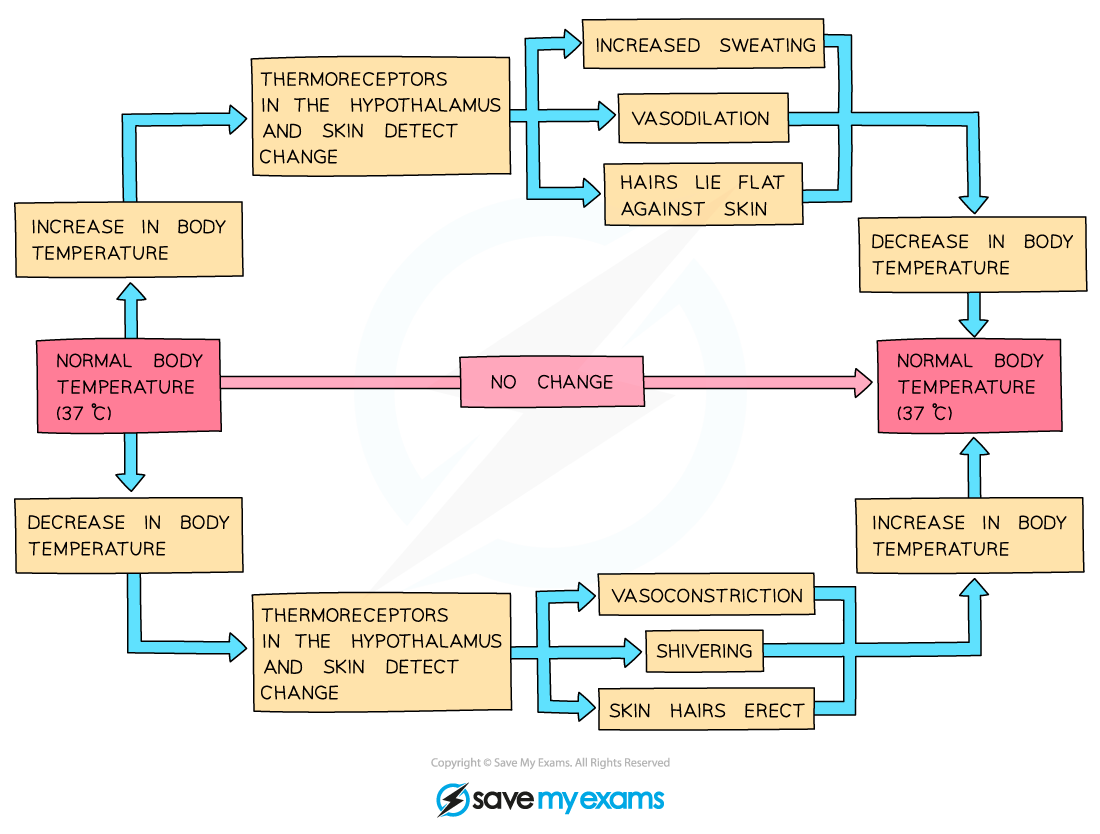Homeostasis: Temperature Control (Cambridge (CIE) IGCSE Biology) : Revision Note
Learn about homeostasis and temperature control for your IGCSE Biology exam. This revision note covers skin structure diagrams, vasoconstriction & vasodilation.
Did this video help you?
The Skin & Homeostasis: Extended
Control of body temperature is a homeostatic mechanism
Homeostasis is the maintenance of a constant internal environment
This means that internal conditions within your body (such as temperature, blood pressure, water concentration, glucose concentration etc) need to be kept within set limits in order to ensure that reactions in body cells can function and therefore the organism as a whole can live
The human body maintains the temperature at which enzymes work best, around 37°C
If body temperature increases over this temperature, enzymes will denature and become less effective at catalysing reactions such as respiration
The Structure of the Skin

A cross-section of human skin
Temperature Regulation by the Skin
Regulation is controlled by the brain which contains receptors sensitive to the temperature of the blood
The skin also has temperature receptors and sends nervous impulses to the brain via sensory neurones
The brain responds to this information by sending nerve impulses to effectors in the skin to maintain the temperature within a narrow range of the optimum, 37°C
Fatty tissue under the dermis acts as a layer of insulation to prevent too much body heat being lost through the skin

Homeostatic responses to changes in body temperature
Responses to changes in temperature:

Vasoconstriction & Vasodilation: Extended
When we are cold blood flow in capillaries slows down because arterioles leading to the skin capillaries get narrower - this is known as vasoconstriction
This reduces the amount of heat lost from blood by radiation as less blood flows through the surface of the skin
When we are hot blood flow in capillaries increases because blood vessels to the skin capillaries get wider - this is known as vasodilation
This cools the body as blood (which carries heat around the body) is flowing at a faster rate through the skin’s surface and so more heat is lost by radiation

Responses in the skin when hot

Responses in the skin when cold

You've read 0 of your 5 free revision notes this week
Sign up now. It’s free!
Did this page help you?

